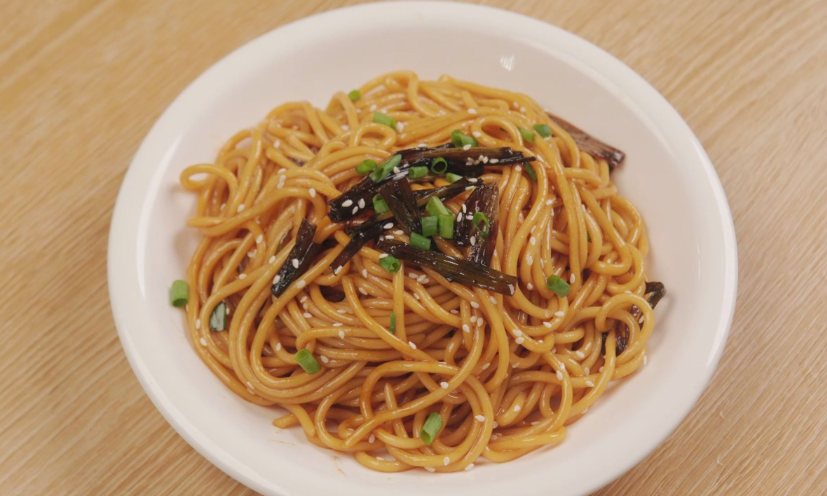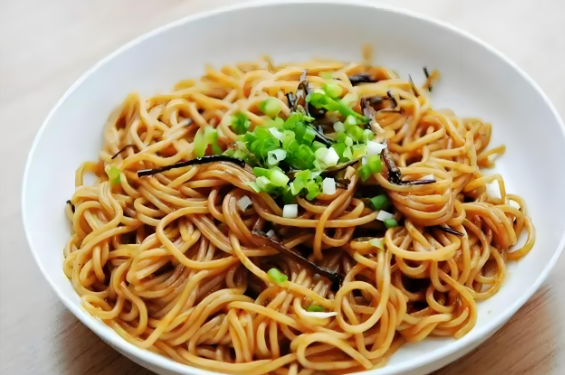A dish that epitomizes Shanghai’s culinary elegance, Scallion Oil Noodles (葱油拌面, congyou banmian) transforms humble ingredients into an umami-rich masterpiece.
With its glossy, springy noodles coated in fragrant caramelized scallion oil, this dish has been a breakfast staple and late-night comfort food for Shanghainese for over a century. Recognized as a UNESCO City of Gastronomy highlight, it’s a must-try for anyone seeking the essence of Shanghai’s food culture.
A Dish Born from Thrift and Flair
Originating in Shanghai’s alleyway kitchens, congyou banmian emerged as a creative solution to resourcefulness. Street vendors repurposed leftover scallion roots and simple wheat noodles, slow-frying the greens to extract maximum flavor from minimal ingredients.
Unlike northern China’s bold, onion-heavy dishes, Shanghainese chefs refined the concept, using tender scallion stalks and a balance of soy sauces to create a dish that’s subtle yet unforgettable.
The Alchemy of Scallion Oil
The magic lies in the slow-cooked scallion oil:
Scallion Selection: Only the green parts of young scallions are used, sliced thinly to ensure even caramelization.
Low-and-Slow Frying: Scallions simmer in neutral oil for 20+ minutes until golden, releasing a smoky-sweet aroma that permeates the oil.
Sauce Base: A mix of light soy sauce (for saltiness), dark soy sauce (for color), and a touch of sugar creates a glossy, balanced coating.
Paired with alkaline wheat noodles—boiled al dente and chilled to retain chewiness—the dish achieves its signature texture: slippery yet springy, clinging perfectly to the oil.
Cultural Icon, Global Appeal
- Everyday Luxury: From Michelin-starred restaurants to street carts, congyou banmian bridges social divides. Locals swear by its hangover-curing powers and nostalgic warmth.
- Adaptability: Modern chefs add toppings like dried shrimp, crispy pork lard, or truffle oil, but purists argue the original is perfection.
- UNESCO Recognition: As part of Shanghai‘s gastronomic heritage, it symbolizes the city’s ability to elevate simplicity into art.
How to Eat Like a Local
Stir Vigorously:
Mix noodles thoroughly to coat each strand with oil and soy sauce.
Texture Play:
Top with reserved crispy scallions for crunch.
Pairings:
Serve with a side of pickled radish or xiaolongbao for contrast. Avoid heavy dishes—this is about savoring purity.
Where to Taste the Best
- Dong Tai Xiang (东泰祥): Open 24/7, this diner serves congyou banmian with a generous sprinkle of dried shrimp and perfectly balanced sauce.
- A Niang Mianguan (阿娘面官): A legacy spot on Sinan Road, known for adding river shrimp for oceanic depth.
- Gu Sha Wu Mian Pu (谷沙屋面铺): For a hearty twist, pair your noodles with their lion’s head meatball.


















No comments yet